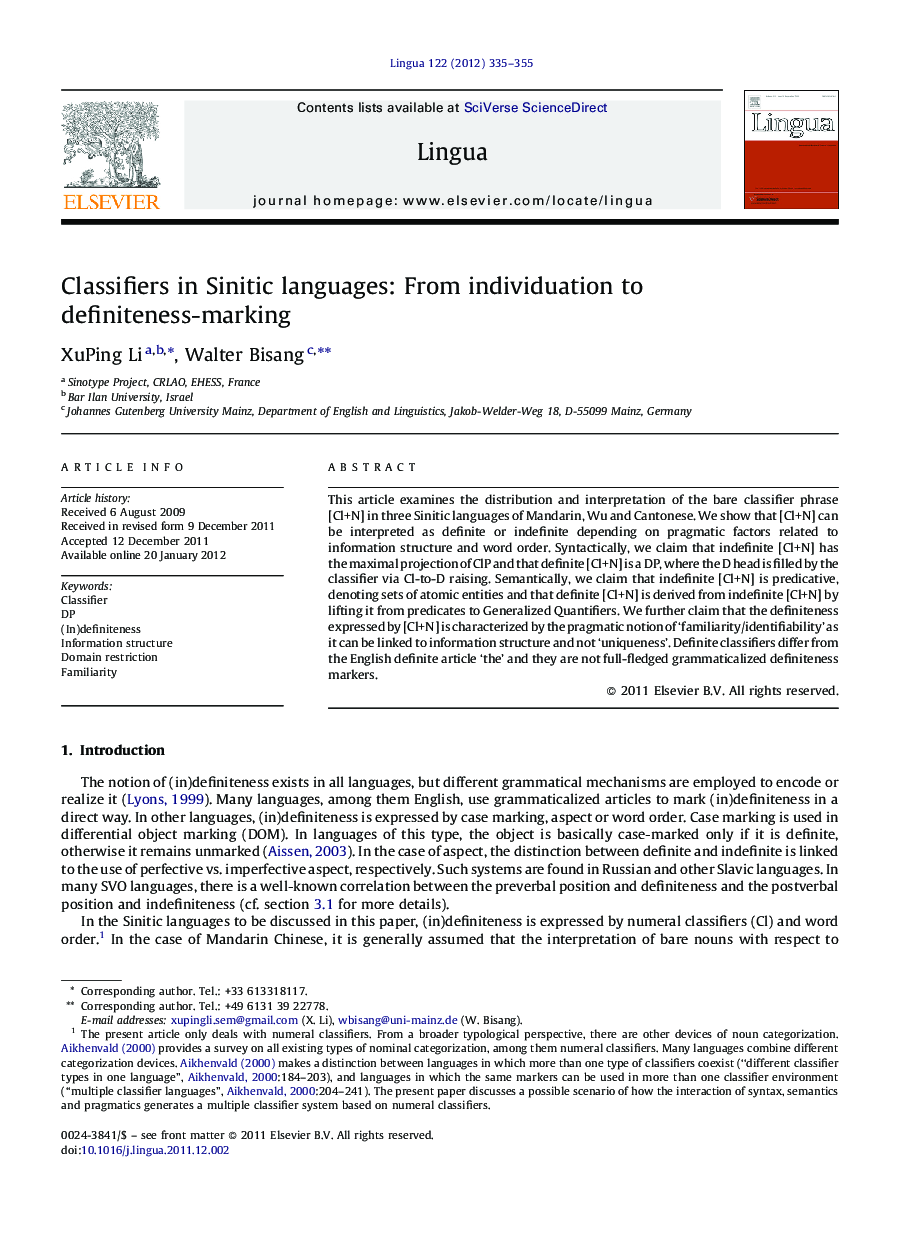| کد مقاله | کد نشریه | سال انتشار | مقاله انگلیسی | نسخه تمام متن |
|---|---|---|---|---|
| 935867 | 923933 | 2012 | 21 صفحه PDF | دانلود رایگان |

This article examines the distribution and interpretation of the bare classifier phrase [Cl+N] in three Sinitic languages of Mandarin, Wu and Cantonese. We show that [Cl+N] can be interpreted as definite or indefinite depending on pragmatic factors related to information structure and word order. Syntactically, we claim that indefinite [Cl+N] has the maximal projection of ClP and that definite [Cl+N] is a DP, where the D head is filled by the classifier via Cl-to-D raising. Semantically, we claim that indefinite [Cl+N] is predicative, denoting sets of atomic entities and that definite [Cl+N] is derived from indefinite [Cl+N] by lifting it from predicates to Generalized Quantifiers. We further claim that the definiteness expressed by [Cl+N] is characterized by the pragmatic notion of ‘familiarity/identifiability’ as it can be linked to information structure and not ‘uniqueness’. Definite classifiers differ from the English definite article ‘the’ and they are not full-fledged grammaticalized definiteness markers.
Journal: Lingua - Volume 122, Issue 4, March 2012, Pages 335-355